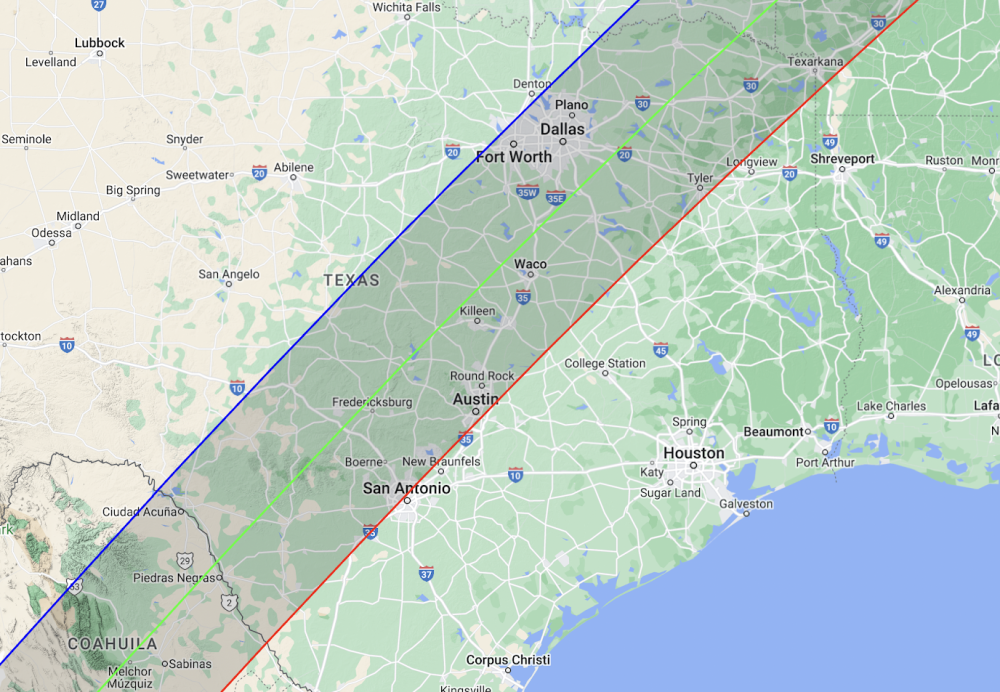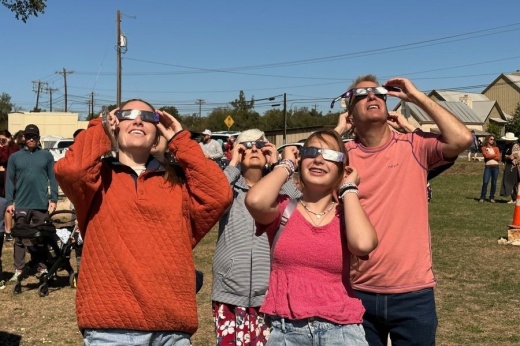The total solar eclipse will be the second celestial event Central Texans will experience in the span of six months, following an annular solar eclipse in October. Locals witnessed the moon cover the center of the sun in the morning hours of Oct. 14, which left a partial “ring of fire” of what remained.
City and county officials anticipate a much larger turn out for the rarer eclipse this spring, which only occurs in the same place about every 200 years, said Adam Kraus, an associate professor at The University of Texas.
“We can expect three to four times our normal population here to watch and travel through, [so] planning is critical,” Dripping Springs Communications Director Lisa Sullivan said.
What's happening
Dripping Springs officials allotted more than $100,000 from the $44 million budget for an upcoming “sunblock party,” which will close Mercer Street for spectators to watch the solar eclipse. Residents and visitors will watch as the moon’s orbit carries it directly between Earth and the sun. During totality—when the moon covers the sun completely—the sky will darken for a few minutes, and the temperature may drop slightly.
“The sky will stay a little blue because sunlight coming down outside the moon’s shadow will bounce through the atmosphere and some will reach us, but it’ll be pretty dark,” Kraus said.
Eclipses happen somewhere on the planet every six months when one of two specific locations amid Earth’s orbit allows for the sun, moon and Earth to line up, Kraus said. However, only a specific region can see an eclipse in its totality and part of Texas will experience it this spring.
The event, which has taken about a year to plan, was paid for by merchandise sales; hotel occupancy tax funds; and sponsorships, including from the Dripping Springs Community Library.
City officials anticipate collecting revenue from hotel occupancy taxes as short-term rentals and hotels book up, but it’s unclear what the total economic impact will be.
Camp sites and hotels have reported their bookings are filling up, including the Courtyard by Marriott and Henly RV Park.
Aside from the city-sponsored event, local businesses including Vista Brewing and Bell Springs Winery are hosting events. While Dripping Springs ISD will be closed, private schools, such as Sunrise Christian School House, have plans to make a day out of the rare event. Local resident Scott Pollard is one of many also taking advantage of the event by hosting a viewing party for friends and family.
“I am looking forward to the eclipse and have already taken off work for the day,” Pollard said.

What residents should know
Spectators will begin to see the eclipse’s path at about 12:15 p.m., and during this time they should use eclipse glasses until totality at about 1:35 p.m.
“The wonderful thing about a total eclipse, and one reason we’re so excited for this one, is that the period of total coverage is the only time you can safely watch an eclipse without special glasses,” Kraus said. “Depending on how close you are to the center of the eclipse path, you’ll have up to four minutes where the sun’s surface is completely blocked.”
What's next
As residents and tourists decide where to spend the afternoon in April, city officials anticipate collecting on the 7% HOT rate funds for hotels and other rentals which will go towards tourism opportunities for the city such as the Dripping Springs Songwriters Festival. Businesses on Mercer Street and near the city’s event are preparing for an influx of customers, and officials recommend preparing ahead of time as traffic and lines for stores may be longer than usual. The community may feel the impact of the tourism brought by the eclipse from April 4 to April 9.
The next chance for Texans to view a total solar eclipse will be in 2045 in the northern part of the state, while Brownsville residents will see one in 2052. Experts predict that Central Texans won’t see another total eclipse for at least 150 years, but partial eclipses will be seen every 5 to 10 years.
View the this story as it appeared in the February edition of Community Impact, with additional graphics, click here.





